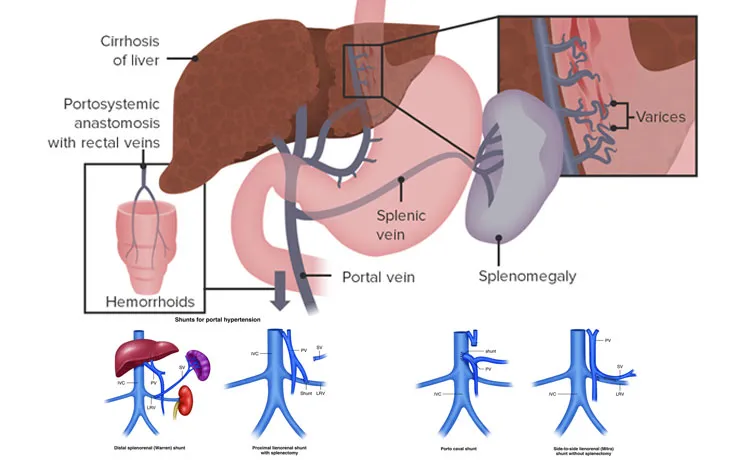Portal hypertension - splenic surgery
Intestinal surgery
Abdominal hernia

An abdominal wall hernia is a protrusion of abdominal contents through the abdominal wall. A
hernia consists of :
- Contents (e.g. bowel omentum).
- Sac (e.g., peritoneum).
- External coverings (skin and subcutaneous tissue).
Hernias occur at natural points of weakness .After abdominal surgery, abdominal wall healing never reaches
100%. An iatrogenic weakness remains, thus predisposing to the formation of a hernia. Such weaknesses may be
exacerbated by conditions that increase intra-abdominal pressure such as ascites, chronic cough, constipation,
urinary outflow obstruction, and heavy lifting.
The four major types of hernia are:
- Reducible-the contents of the hernia will return easily to the abdomen cavity.
- Irreducible or incarcerated-the contents cannot be completely reduced. This situation may be chronic, in
which case bowel or omental viability is not in question. In acute cases, bowel viability may become
acutely compromised.
- Strangulated-the contents of the sac become stuck through the hernial orifice and the blood supply is cut
off so that the bowel becomes ischemic. Patients have symptoms of small bowel obstruction, and the hernia
is a tender, inflamed swelling.
- Sliding-the sac may contain bowel, which is adherent to the sac, so that it cannot be reduced separately
(e.g., sigmoid colon).
Types of hernia
- Inguinal hernia
- Incisional hernia
- Umbilical hernia
- Femoral hernia
